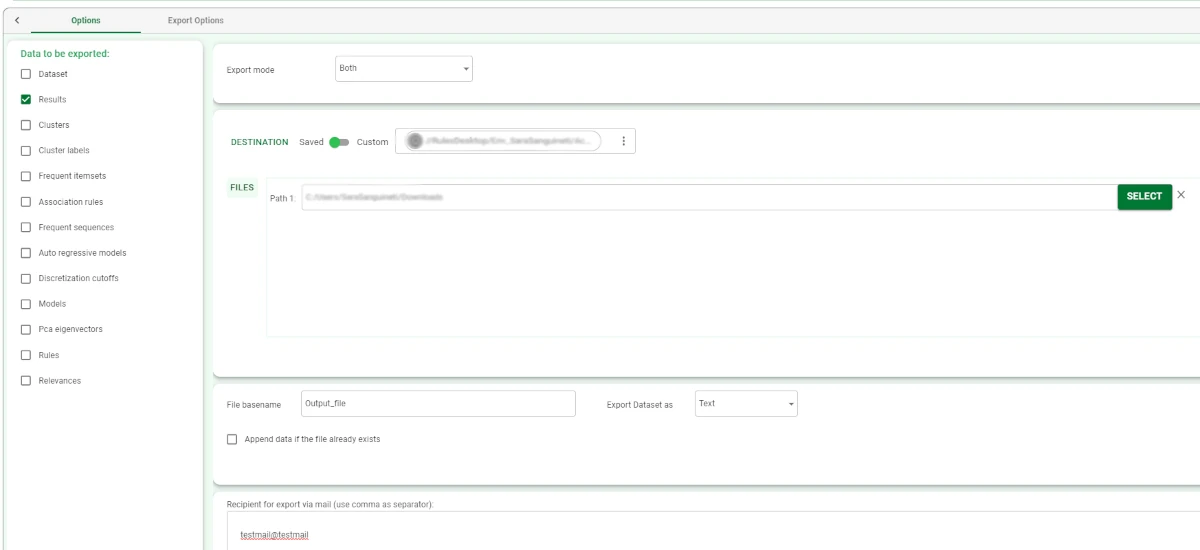Export to Word File¶
The Export to Word file task exports datasets or other data structures to a Word file.
The Export to Word File task is divided into two tabs:
the Options Tab,
the Export Options.
The Options tab¶
A detailed description of the Options tab is provided in the Export tasks introductory page.
The Export Options tab¶
The Export Options tab is made of the Dataset Structure pane only.
Dataset Structure
Within this pane, users can set and configure the following options:
- Data separator: the data separator delimiting the values of the data to be exported in the output file. Possible values are:
COMMA
TABBING
SEMICOLON
SPACE
OTHER: after having selected this option, specify any other wished data separator.
String for missing values: the character or string used to indicate missing values.
Text delimiter: select from the drop-down list the symbol used to identify strings, which will included in the exported file (e.g. selecting the symbol “, the string age will be exported as “age”).
Put names in line (0 means ‘no names’): the line number from which the names of the columns will be taken.
Put types in line (0 means ‘no types’): the line number from which the names of the data types will be taken.
Example¶
Drag an Export to Word File task onto the stage and link it to the task containing the data to export.
- Double-click the task to open it and configure it as follows:
Select Results as the Data to be exported.
Select Both as the Export mode.
Select the Destination type: in this case, we decided to use a Saved destination, a Sharepoint connection.
Choose the path of the folder where the file will be stored by clicking on the SELECT button.
Write the File basename in the corresponding field.
Type the email addresses to which you want to send the exported file by typing them in the Recipients for export via email field.
